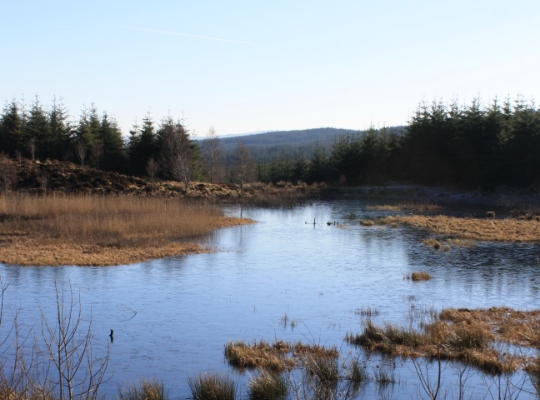Tree species diversity
Increasing the diversity of tree species can refer to changing tree species, increasing the overall number of different species, mixing species in stands or making use of different provenances.
Why increase species diversity?
There are strong reasons to diversify tree species in woodland and forests.
- May reduce wind, wildfire, pests and pathogens, drought and frost risk if different species have different vulnerabilities to these risks.
- Provide greater diversity of timber and wood fibre and improve market opportunities.
- Increase productivity of some mixed species stands.
- Provide greater resilience by enabling more than one species to fulfil the role of ‘keystone’ resource provider.
- Enhance biodiversity.
Guidance notes
- Where considering exotic tree species, choose species which have been the subject of provenance testing and trials.
- Under-planting and mixed species restocking can improve resilience, not only to climate change but also to other threats, such as pest and disease outbreaks.
- Nurseries are developing stock with the aim to improve climate resilience, e.g. breeding for drought resistance. Incorporating an element of these adds diversification and resilience within the same species. Nurseries that are members of certification schemes such as ‘Plant Healthy‘ offer an additional degree of quality assurance about planting stock health.
For further advice see the UKFS Practice Guide ‘Adapting forest and woodland management to the changing climate’
Download the UKFS Adaptation Practice Guide
Printed copies are available to purchase from Forest Research.
"*" indicates required fields

Reducing climate change risks
The following risks may be reduced if the adaptation measure is applied appropriately:
Case study
An example of how diversification of tree species is helping to reduce wind risk in Scotland
Tools to assist decision-making
The extent to which tree species diversification can be achieved will depend on management objectives, site conditions and the suitability of tree species for the site soil and climatic conditions. The free Forest Research species suitability tool ESC (Ecological Site Classification) provides important guidance and can help identify over 60 alternative tree species.
To help select the right species for the right site, the Forest Research tree species database contain information on a wide range of trees including provenance, site requirements and risks of pests and pathogens.



